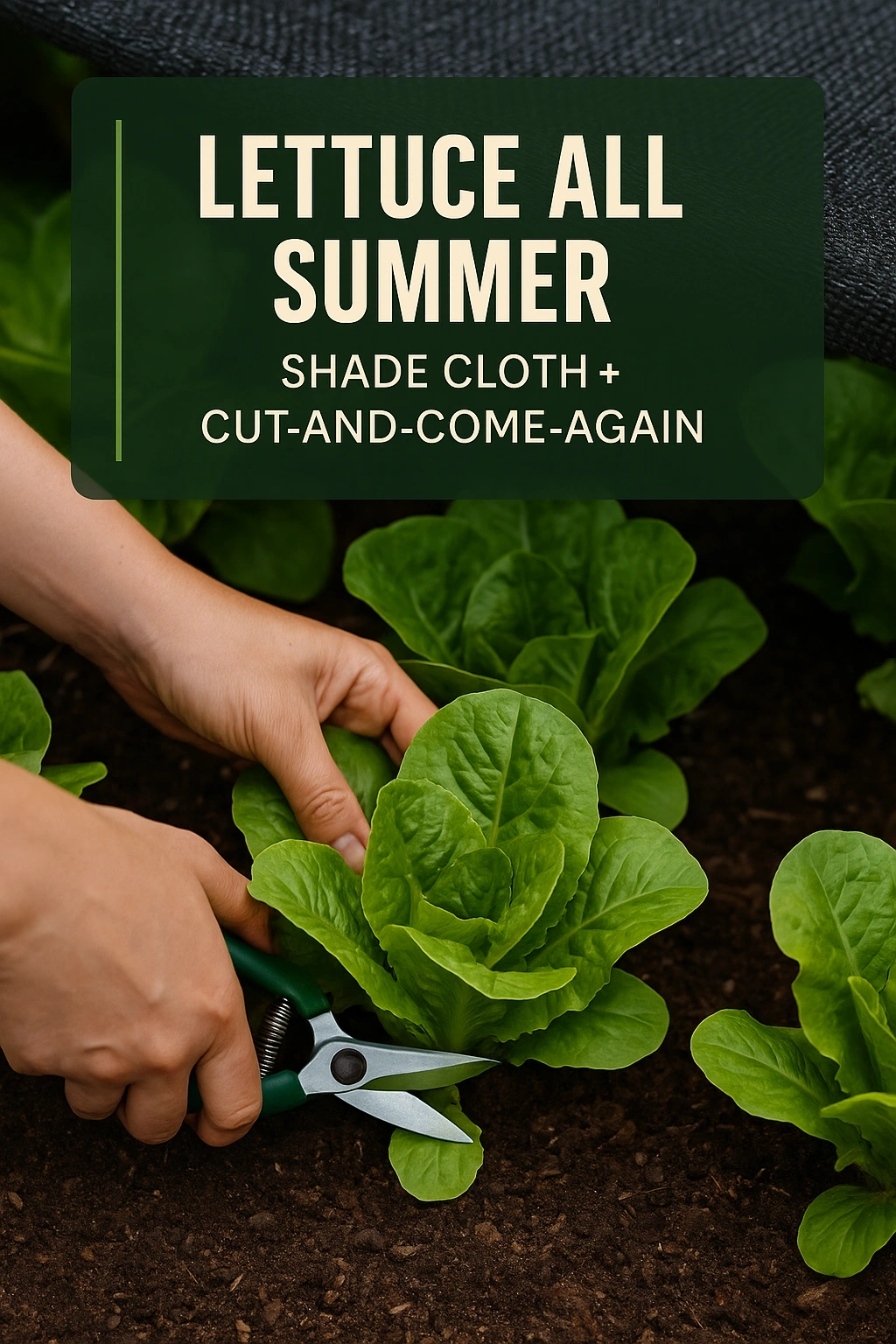
Growing lettuce throughout the summer can be challenging due to the heat and sun exposure. However, with the right shade cloth and techniques like the “cut and come again” method, you can enjoy fresh, crisp lettuce all season long. This article explores how to use shade cloth effectively, the benefits of growing cut-and-come-again lettuce, and practical tips for successful cultivation.
Understanding the Importance of Shade Cloth
Shade cloth serves as a protective barrier that reduces sunlight exposure, helping to regulate temperature and moisture in the soil. For lettuce, which thrives in cooler conditions, shade cloth can prevent bolting—when lettuce flowers prematurely due to stress from heat. By providing the right amount of shade, you can cultivate lettuce varieties that remain tender and flavorful throughout the summer months.
Choosing the Right Shade Cloth
Selecting the appropriate shade cloth is crucial for your lettuce’s success. Shade cloth is available in various percentages, typically ranging from 30% to 90% shade. The ideal selection depends on your local climate and the specific lettuce varieties you choose.
Shade Percentage and Its Effects
A shade cloth that blocks 30% to 50% of sunlight is generally suitable for lettuce, allowing enough light for photosynthesis while protecting it from intense heat. In hotter climates, consider using a cloth that provides 60% or more shade, but be mindful of the potential for reduced growth if light levels drop too low.
Understanding Cut and Come Again Lettuce
The cut-and-come-again method is an innovative way to harvest lettuce. Instead of pulling the entire plant, this technique allows you to trim the outer leaves and encourage new growth from the center. This method not only extends the harvesting period but also promotes a continuous supply of fresh greens.
Benefits of the Cut and Come Again Method
- Continuous Harvest: You can enjoy fresh lettuce over a longer period.
- Less Waste: Only the outer leaves are harvested, allowing the plant to thrive.
- Consistent Flavor: Fresh leaves maintain better flavor and texture.
Preparing Your Soil for Lettuce
Healthy soil is the foundation of a successful lettuce crop. Before planting, ensure your soil is rich in organic matter and well-draining. Conduct a soil test to determine pH and nutrient levels, making amendments as necessary.
Soil Amendments for Optimal Growth
Add compost or well-rotted manure to enrich your soil. A balanced fertilizer can also support lettuce growth, but be careful not to over-fertilize, as this can lead to excessive leaf growth at the expense of flavor.
Planting Cut and Come Again Lettuce
Once your soil is prepared, it’s time to plant your lettuce. Choose varieties that are well-suited for summer growth, such as loose-leaf or butterhead types. These varieties are generally more tolerant of heat.
Planting Techniques for Success
Sow seeds directly into the soil about ¼ to ½ inch deep. Space them according to the variety’s recommendations, usually around 6 to 12 inches apart for optimal air circulation. After sowing, water gently to avoid displacing the seeds.
Maintaining Your Lettuce Crop
Proper maintenance is essential for a productive lettuce garden. Regular watering, pest management, and monitoring for diseases will help ensure healthy growth. Lettuce prefers consistent moisture, so aim to keep the soil evenly moist but not waterlogged.
Watering and Care Tips
Water early in the morning to reduce evaporation and prevent fungal diseases. Mulching around the plants can help retain moisture and suppress weeds. Additionally, keep an eye out for common pests such as aphids and slugs, and take action promptly if they appear.
Harvesting Your Lettuce
When your lettuce reaches a suitable size, it’s time to harvest. Using the cut-and-come-again method, snip the outer leaves with clean scissors. Leave the inner leaves intact to encourage further growth.
Timing Your Harvest
For the best flavor and texture, harvest in the morning when the leaves are crisp and full of moisture. Continue to monitor the plants, as you can repeat the harvesting process every few weeks, depending on growth rates.
Common Challenges and Solutions
Even with the best planning, challenges may arise when growing lettuce in the summer. Understanding potential issues can help you troubleshoot effectively.
Addressing Heat Stress and Pests
- Heat Stress: If you notice wilting or yellowing leaves, consider increasing shade or watering more frequently.
- Pest Infestations: Use insecticidal soap or neem oil as organic pest control methods to protect your lettuce.
FAQs
What varieties of lettuce are best for summer growing?
Loose-leaf and butterhead varieties tend to perform best in summer due to their heat tolerance and quicker maturation times.
How often should I water my lettuce?
Lettuce should be watered consistently to keep the soil evenly moist, typically every 2-3 days, but this may vary depending on weather conditions.
Can I grow lettuce in containers?
Yes, lettuce grows well in containers, provided they have adequate drainage and are placed in a location with sufficient light and shade.
How can I prevent lettuce from bolting?
To prevent bolting, provide adequate shade, keep the soil moist, and choose heat-tolerant varieties. Harvesting regularly can also help manage plant stress.
Is it necessary to use shade cloth for all lettuce varieties?
While not all varieties require shade cloth, using it can significantly enhance growth and quality during hot summer months, especially for more sensitive types.
